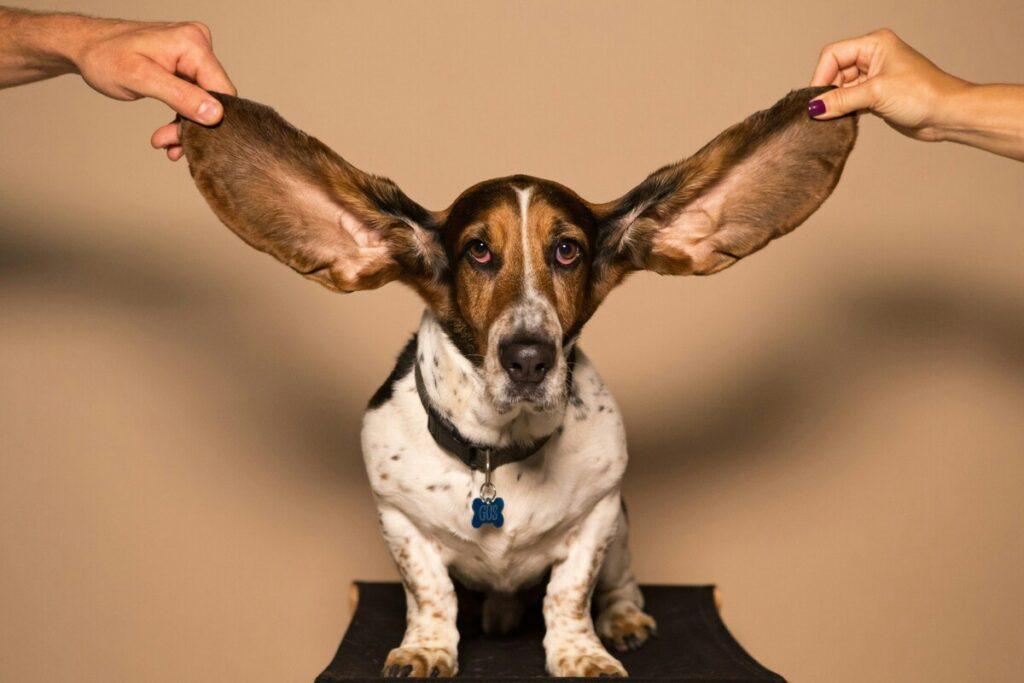Preventing ear infections in dogs is one of the most effective ways to keep your pup happy and healthy. In this guide, you’ll learn how to stop dog ear infections before they start — with proven tips, signs to watch for, and vet-recommended care routines.
Why Ear Health Matters in Dogs
Dogs have L-shaped ear canals that easily trap moisture, wax, and debris. This anatomy makes them more prone to infections, especially if they have floppy ears or love to swim. Left untreated, infections can lead to pain, balance problems, or even hearing loss. That’s why preventing ear infections in dogs is essential for their well-being.
Common Causes of Ear Infections in Dogs
- Moisture buildup: From swimming or improper drying after baths.
- Allergies: Food or environmental allergies often lead to chronic ear issues.
- Ear mites: Common in puppies and rescue dogs.
- Excess wax or debris: More frequent in breeds like Cocker Spaniels and Bulldogs.
- Underlying medical issues: Conditions like hypothyroidism or autoimmune disease.
More details: Common Dog Health Problems
Dog Breeds Most Prone to Ear Infections
Some dog breeds are genetically or structurally more prone to developing ear infections. If your pup is on this list, regular ear cleaning and check-ups are a must:
- Basset Hound: Their long, floppy ears trap moisture and limit airflow.
- Cocker Spaniel: Known for heavy ear hair and wax buildup, frequent cleaning is essential.
- Poodle: Curly-haired breeds often develop trapped debris and inflammation inside the ears.
- Golden Retriever: Loves water and has heavy ears that retain moisture.
- Shih Tzu: Small ear canals and thick hair make them sensitive to infection.
- Beagle: Prone to both food and environmental allergies, leading to frequent irritation.
Breed type is one of the most overlooked but important risk factors when it comes to long-term ear health. If your dog is in one of these categories, be proactive with care and talk to your vet regularly.

Signs Your Dog Might Have an Ear Infection
- Scratching at ears
- Head shaking or tilting
- Red, swollen ear canals
- Unpleasant odor or discharge
- Crusty skin or scabs around the ear
Learn more in our guide on Signs of Ear Infections in Dogs.
How to Prevent Ear Infections in Dogs
1. Clean Weekly with Vet-Approved Solution
Wipe only the outer ear with gauze or a cotton pad. Never go deep into the canal, and avoid cotton swabs.
2. Always Dry After Water Exposure
After swimming or bathing, use a towel or cotton ball to remove all moisture. You can also use a vet-recommended drying solution.
3. Regular Grooming
Trim excess hair around the ears to improve airflow, especially in breeds like Poodles, Shih Tzus, and Maltese.
4. Address Food Allergies
Switch to grain-free or hypoallergenic dog food if your vet suspects dietary issues.
5. Schedule Regular Vet Visits
Ask your vet to check your dog’s ears at every appointment, even if they show no signs of infection.
Common Mistakes to Avoid
- Cleaning too deep inside the ear
- Using vinegar, hydrogen peroxide, or alcohol without vet guidance
- Skipping drying steps after water exposure
- Neglecting early warning signs
Pro Tips from Dog Owners
“I keep a bottle of drying solution in my dog’s hiking bag. It’s saved us after beach trips.” – Rachel, Labrador mom
“A quick ear check during weekly brushing helps me avoid surprise vet visits.” – Andre, Beagle owner
Final Thoughts
With routine cleaning, careful drying, and regular vet care, you can prevent ear infections in dogs before they start. Your pup deserves clean, comfortable ears — and now you know how to help make that happen!
FAQ
How often should I clean my dog’s ears?
Once a week, or as directed by your vet based on breed and lifestyle.
Which dog breeds are most prone to ear infections?
Floppy-eared dogs like Basset Hounds, Cocker Spaniels, and Poodles are most at risk.
Can diet help prevent ear infections?
Yes. Hypoallergenic or grain-free foods can help manage allergies that cause ear inflammation.
External resource: PetMD’s ear infection guide



